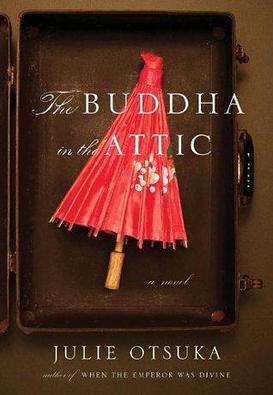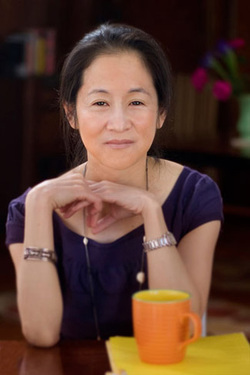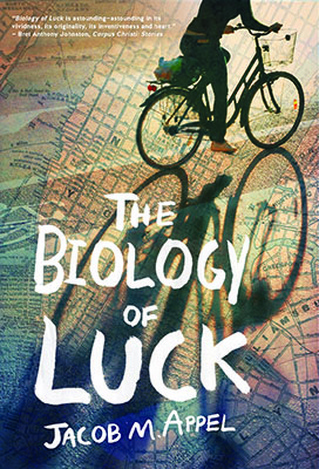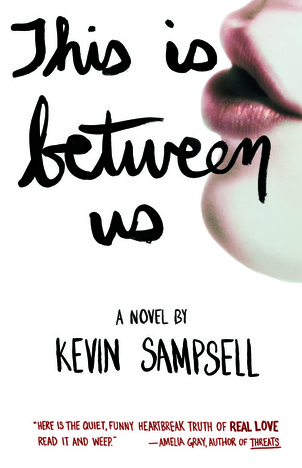Reviewed by BJ Fischer

During the opening ceremony of the Sochi Olympics the wags took to Twitter, demanding to know why the Russians were not portraying events like the Great Purge in their obscure symbolic dance interpretation of Russian history.
The answer is easy: for the same reason we don’t cover slavery or Native Americans when the Olympics are in the United States.
Or, the internment of the Japanese during World War II. Would have been perfect for Los Angeles in 1984, right?
The point is that every narrative (national or personal) has dark chapters. I suspect the Japanese internment is less well known than others, probably because it has not been as high profile in popular culture.
Literature is not popular culture anymore, so I don’t think Julie Otsuka’s The Buddha in the Attic will help raise awareness very much, but it is still an exceptional read. The novel, which tells the story of Japanese “picture brides” who come to America in the early 20th Century, is a compelling and impactful book that tells a horrifying story in an understated way, the perfect formula for delivering an emotional punch to readers.
The answer is easy: for the same reason we don’t cover slavery or Native Americans when the Olympics are in the United States.
Or, the internment of the Japanese during World War II. Would have been perfect for Los Angeles in 1984, right?
The point is that every narrative (national or personal) has dark chapters. I suspect the Japanese internment is less well known than others, probably because it has not been as high profile in popular culture.
Literature is not popular culture anymore, so I don’t think Julie Otsuka’s The Buddha in the Attic will help raise awareness very much, but it is still an exceptional read. The novel, which tells the story of Japanese “picture brides” who come to America in the early 20th Century, is a compelling and impactful book that tells a horrifying story in an understated way, the perfect formula for delivering an emotional punch to readers.
Otsuka made one defining choice, which is the story’s point of view: first person plural, as seen here in the book’s opening lines:
On the boat the first thing we did—before deciding who we liked and didn’t like, before telling each other which one of the islands we were from, and why we were leaving, before even bothering to learn each other’s names—was compare photographs of our husbands.
Otsuka sacrificed a number of opportunities when she made this choice. A story that covered one family’s story would have had incredible narrative muscle built on a traditional plot. A story that covered six families would have been an epic.
But the author’s delicate point-of-view choice is buttressed by Otsuka’s incredible eye for detail:
On the boat the first thing we did—before deciding who we liked and didn’t like, before telling each other which one of the islands we were from, and why we were leaving, before even bothering to learn each other’s names—was compare photographs of our husbands.
Otsuka sacrificed a number of opportunities when she made this choice. A story that covered one family’s story would have had incredible narrative muscle built on a traditional plot. A story that covered six families would have been an epic.
But the author’s delicate point-of-view choice is buttressed by Otsuka’s incredible eye for detail:
 Julie Otsuka, author of The Buddha in the Attic
Julie Otsuka, author of The Buddha in the Attic Some of us worked quickly to impress them. Some of us worked quickly just to show them that we could pick plums and top beets and sack onions and crate berries just as quickly if not more quickly than the men. Some of us worked quickly because we had spent our entire childhoods bent over barefoot in the rice paddies and already knew what to do. Some of us worked quickly because our husbands had warned us that if we did not they would send us home on the very next boat.
What is difficult to transmit here is that this construction carries on for pages and is repeated multiple times in the book. The variety and richness of the detail allow us to truly understand that what was done to the Japanese was done not as much to a class of people but to a large number of diverse individuals who happened to share a common heritage. This moves the story from the political to the human. Otsuka places you inside the mosaic so you can see the individual tiles and takes the tragedy (as they say now) to scale.
The book makes it clear: being an immigrant to the U.S. was incredibly difficult. America offered backbreaking labor and constant subjection. The Buddha in the Attic also makes it clear that the only thing worse is to be an immigrant from a country the U.S. is at war with.
The rumors began to reach us on the second day of the war. There was talk of a list. Some people being taken away in the middle of the night. A banker who went to work and never came home. A barber who disappeared during his lunch break. A few fishermen who had gone missing. Here and there, a boardinghouse, raided. A business, seized. A newspaper shut down.
What is difficult to transmit here is that this construction carries on for pages and is repeated multiple times in the book. The variety and richness of the detail allow us to truly understand that what was done to the Japanese was done not as much to a class of people but to a large number of diverse individuals who happened to share a common heritage. This moves the story from the political to the human. Otsuka places you inside the mosaic so you can see the individual tiles and takes the tragedy (as they say now) to scale.
The book makes it clear: being an immigrant to the U.S. was incredibly difficult. America offered backbreaking labor and constant subjection. The Buddha in the Attic also makes it clear that the only thing worse is to be an immigrant from a country the U.S. is at war with.
The rumors began to reach us on the second day of the war. There was talk of a list. Some people being taken away in the middle of the night. A banker who went to work and never came home. A barber who disappeared during his lunch break. A few fishermen who had gone missing. Here and there, a boardinghouse, raided. A business, seized. A newspaper shut down.
| | From that point on, Otsuka employs her unsparing detail on the agonizing and slow descent of the story – a tragedy made poignant by the fact that the reader knows the end of the story but the victims don’t. We see heart-wrenching, page-long granular descriptions on how they prepared to leave, what they were taking with them, where they thought they were going (the mountains, the desert), whether there would be doctors, thieves … milk. |
Otsuka doesn’t carry the narrative all the way through to internment. In fact, to close the story, she shows the final injustice, as the abandoned Japanese homes are scavenged for parts by the Americans who remained behind.
A lemon tree is dug up over at the Sawadas’. Locks are jimmied off of front and back doors. Cars are stripped. Attics raided. Stovepipes pried loose. Boxes and trunks are hauled up out of basements and loaded into pickup trucks under cover of night. Doorknobs and lighting fixtures go missing. And out on Third Avenue, in the pawn and secondhand shops, exotic items from the Far East briefly surface before making their way into some of our homes.
The Buddha in the Attic was well-received and honored, and deservedly so. It tells an important story that is not well enough known in the United States. But the book is just as important a primer on how to tell a story of injustice.
The challenge is always that the truth is so incendiary that an average writer’s instinct is to fan the flames. What makes this book memorable is that the author has the courage and extraordinary ability to build the fire slowly.
A lemon tree is dug up over at the Sawadas’. Locks are jimmied off of front and back doors. Cars are stripped. Attics raided. Stovepipes pried loose. Boxes and trunks are hauled up out of basements and loaded into pickup trucks under cover of night. Doorknobs and lighting fixtures go missing. And out on Third Avenue, in the pawn and secondhand shops, exotic items from the Far East briefly surface before making their way into some of our homes.
The Buddha in the Attic was well-received and honored, and deservedly so. It tells an important story that is not well enough known in the United States. But the book is just as important a primer on how to tell a story of injustice.
The challenge is always that the truth is so incendiary that an average writer’s instinct is to fan the flames. What makes this book memorable is that the author has the courage and extraordinary ability to build the fire slowly.

BJ Fischer's short story "The Terrible Day of the Wisecrack" was published in February in the Linden Avenue Literary Journal, and was followed by "The True Story of Valley Forge Fries" earlier this month in the Blue Lake Review. His essays have appeared in The Fiddleback, The (Toledo) Blade, the Bygone Bureau, Punchnel's, Thought Catalog, Impose Magazine, the Minneapolis Review of Baseball, Midmajority.com, and Ontologica.
You can follow BJ Fischer on Twitter: @fischerbj or on Tumblr: bjfischer.tumblr.com.
You can follow BJ Fischer on Twitter: @fischerbj or on Tumblr: bjfischer.tumblr.com.


 RSS Feed
RSS Feed

